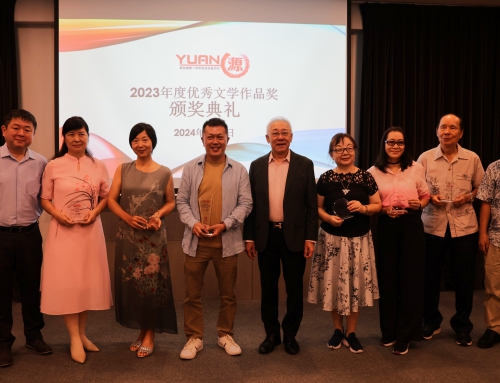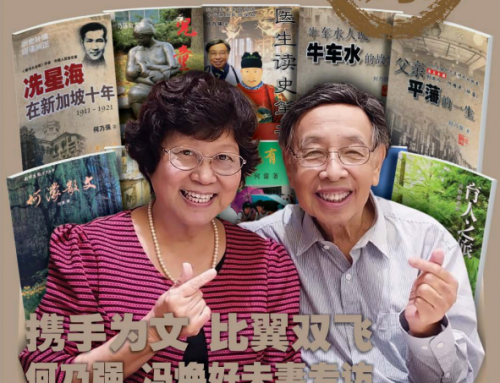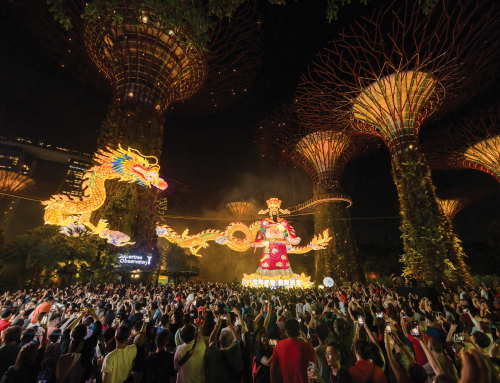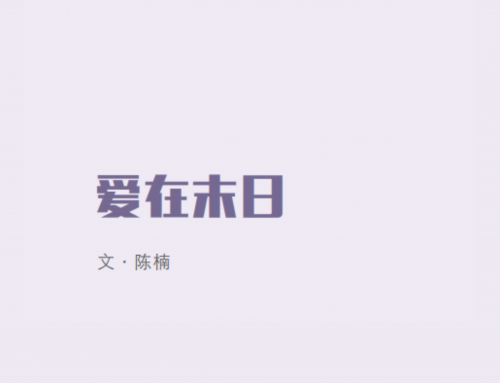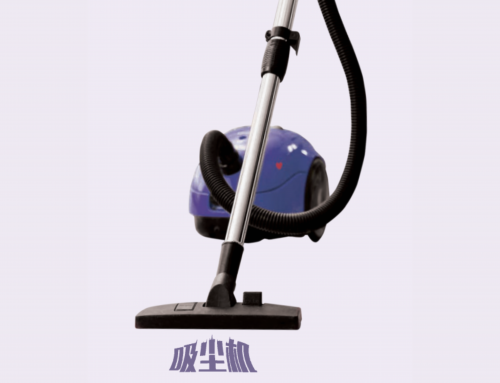新加坡潮剧:众人共绘新美景
文 · 蔡曙鹏 图 · 受访者提供
潮剧是文化底蕴深厚的古老剧种。吴国钦教授在他和林淳钧先生合著的50万字的《潮剧史》里,以明宣德六年(1431年)戏文写本《刘希必金钗记》为据,推定潮剧应产生于宣德(1426-1435年)年间。这样算来,潮剧有近600年历史,比500多年的婺剧、200多年的京剧、120多年的越剧及歌仔戏历史要久远。古代留下来的剧本又有多少呢?林淳钧与陈历明合著的《潮剧剧目汇考》,列出了今存而能考其由来,叙其演变的潮剧剧目多达2400个。潮剧有如此“殷实家底”,因而经得起岁月的考验,在远离发源地的许多地域,也能像沙漠里的百岁兰一样,以顽强的生命力,在干燥高温的恶劣环境里,绽放生命的精彩。
新加坡潮剧的传播、传承,可以说是由中国南来的戏班、本地戏班、业余剧团和受过潮剧专业训练的新移民共同建构的一部戏曲历史。本地戏班,曾有万人空巷的热闹,也经历过戏棚下无人问津的冷清。但潮剧,毕竟是覆盖范围广、表演系统精致、具有代表性的艺术品种。因此,尽管生存与持续发展步履艰难,潮剧文化积淀着高尚精神追求与积累着强大艺术魅力,依然会吸引一定数量的现代都市人。传播与传承的重任,于今落在砥砺前行的潮人社群、社团和剧社的身上。
戏班作为传播潮剧的主力,哪个戏班最早到新加坡?已故老赛桃园班主黄茸尼、潮乐名家杨秀钦、詹秀音(《新加坡的潮剧》)、陈韩星(《潮剧百年史稿》)、陈星南(《新加坡潮剧百年回顾》)稍有不同看法。有史料确定的是,到了二十世纪初,老玉楼春、老赛宝丰、老赛荣丰、老万梨春、中赛桃源、老三正顺等在新加坡都有可观的观众群。鼎盛时期,百人戏班阵容强大、服装布景美轮美奂、剧目包罗万象,演出二、三十集的连台本戏,观众热烈追捧。我的童年时代,就曾跟着祖母在戏园、寺庙看过大戏班如老赛桃园的精彩演绎。当年从晚上7点半到午夜,大锣大鼓的紧张场面或委婉优雅的弦诗,引人入胜的情节,观众无不如痴如醉。
潮剧演出团队多种推广模式
回顾2023年的潮剧,社区潮剧团、业余潮剧团、戏班与专业潮剧团的演出比去年更为频密,演出场地更为多样化:录制视频、线上学习、海外展演、进入校园推广等。此外,也有3个海外南来演出的剧团、中国名伶与新加坡剧团的合作演出。他们的到访,给喜爱潮剧的观众带来观赏优质演出的机会。
和陈韵智(左)合演如切潮剧团的《四郎探母》-400x288.jpg)
洪志庆(右)和陈韵智(左)合演如切潮剧团的《四郎探母》
今年21岁的如切潮剧团,老中青少四代团员,积极在社区和寺庙展演。先后在牛车水民众俱乐部、勿洛民众联络所、如切民众俱乐部和凤山宫演出。如切潮剧团团长洪志庆说:“我们今年演出的剧目包括两出全本大戏《火烧临江楼》和《四郎探母》。折子戏则有《三哭殿》《龙女情》《洗马桥》《龙井渡头》《汉文皇后》的选段。观众喜爱的《梅亭雪》和小戏《串戏订亲》。其中最特别的是受凤山宫萧建南邀请,参加该庙庆祝九皇大帝圣诞的庙会演出。庙会从9月10日至24日举办,受邀戏班有新怡梨兴、新新荣和、老赛桃园和我们。在香火缭绕的氛围里,更深切体会人们对未来风调雨顺、平安健康的美好期许。庙会承载了华族传统民俗文化,世代延续,在时间的长河中不断发展,内涵着民间的信仰追求。对业余潮剧演员来说,这是一个很宝贵的艺术与社会经验。这种民俗活动,让团员增加了对戏曲和民间信仰之间关系的理解。”如切潮剧团凝聚力强,以演出传统剧目为主,成为鲜明特点。
-400x255.jpg)
华族戏曲工作室的《包公会李后》(右林楚强、中陈巧鸾)
文化的传承和传播是文明延续的重要基础。我想,带着历史印痕的潮剧文化火种,总会有后来人。果然,在2021年2月15日,林楚强创办的华族戏曲工作室,破土而出,令人惊喜。工作室努力的目标明确,锁定为凝聚潮剧爱好群体,目标对象可为戏班伶人,或有、无舞台经验的潮剧票友。林楚强认为:“我国早在2017年就开始进入到“老龄化”阶段,但新加坡的人均预期寿命平均为83-85岁。工作室为这个群体提供活动空间,纪录他们的表演,为新加坡潮剧史留下影像资料。”若能进一步以文字讲述剧目特色、演员从艺历程等资料,更能提升档案价值。
工作室在阿里哇艺术中心租赁的空间虽然不大,善于变通的林楚强,将它变身成多功能摄影棚。两年多来,录制了29集《潮曲云唱》,成为乐龄潮剧人的乐园。2023年录制的《蔡瑞芳潮剧艺术专辑》和《陈巧鸾潮剧艺术之生旦净丑》,前者回顾了蔡瑞芳自走入潮剧园地四十余年来演剧的精彩片段,后者展现了新荣和兴班班主陈巧鸾的表演功力。工作室的脸书也发布其他戏曲剧种的演出信息,并时常无偿借出场地、服装、头盔等戏曲用品给需要的团体。

演奏潮乐、汉乐的陶融儒乐社乐队
面对筹集资金不易,演出成本大幅度增加,成立于1931年的陶融儒乐社,决定今后两年推出公演项目。不过,去年共推出了三个演出,内容形式各异。首场在麦波申民众俱乐部,推出《陈三五娘》之《暮春三月》《益春留伞》和喜剧色彩浓厚的《泼水成亲》及潮曲两首。第二个演出是主办中国普宁潮剧团在黄金剧院的商演,四个剧目是《杨门女将》《三婿贺寿》《状元平冤》和新编剧目《如是传》。林舜香社长说:“普宁潮剧团的访问演出,提供了我们了解当下中国潮剧发展现状的一个例子。他山之石,可以攻玉。”陶融的第三场演出是为庆祝成立92周年而举办的潮剧潮曲晚会《重现苏六娘·潮乐展风采》,精选了《苏六娘》四场戏,邀请该社艺术顾问、中国国家一级演员方展荣和两位青年演出客串。
-300x250.jpg)
余娱儒乐社《柳明月》(左林婵卿、中林秀凤、右陈爱伦)
拥有111年历史的余娱儒乐社,2023年在三个场地呈献了四个演出。首场演出是参加戏曲学院主办的《2023年戏曲大舞台》。作为协办单位,余娱呈献了《京城会》《武松杀嫂》《穆桂英招亲》和《双玉婵》选段,以及《火烧临江楼》的名段《端阳一去已三朝》。余娱的第二、三、四场是非盈利机构天猛公基金会特邀的演出。8月中旬,庆祝中元节的两场在基金会总部场地的演出。第四场是为祝贺天猛公艺术基金会与潮州八邑会馆在10月底签署谅解备忘录的特别演出。演了《京城会》《苏六娘》之《杨子良讨亲》和《红鬃烈马》之《堂前敞心扉》,总统夫人珍一藤木是特别嘉宾、签署仪式的见证人。潮州八邑会馆会长拿督斯里吴木兴博士说:“我们将充分利用天猛公的潮汕文化和创意,以及八邑会馆在国内外建立的广泛人脉关系,强强联手,更好地传播具有本地特色的潮州文化和艺术。”天猛公创始人陈克湛说:“正式签署谅解备忘录后,将开展以潮州传统为主的活动,加入跨文化与领域的元素,以南洋华裔视角来推广潮州文化。”
余娱儒乐社的2023年度大戏《春江月》,移植自包朝赞1983年的越剧剧本。1988年余娱儒乐社曾在维多利亚剧院演出三晚,座无虚席。这次时隔35年重演两晚。来自福建省郑陈森导演说:“疫情改变了大家的生活形态,而这批从年轻时就在余娱儒剧社学戏、演戏的演员,对他们热爱的艺术数十年如一日,守护潮剧家园,令我肃然起敬。他们有一心要演好戏的进取心和各自发挥所长的凝聚力,才能保持不断进步的业绩。祝福余娱继续稳步前行。”
南华潮剧社转型的成果与走向
去年欢庆成立一个甲子的南华潮剧社,是新加坡团队转型成功的杰出范例。在卓林茂BBM(L)的领导下,成立于1963年的业余潮剧社团,成功转型。从2017年开始,成为国家艺术理事会主要拨款的收益团体之一,2020年至2023年共获得54万元。转型后的南华潮剧社是包括了推动潮剧、潮乐和潮州文化研究三个内容的艺术大团。有鉴于1999年我在南洋艺术学院表演艺术学校主持工作时,与上海戏剧学院建立了友好合作关系,优化了课程内容的经验。去年3月,我向卓林茂社长建议到上海戏剧学院访问,探讨如何借助其优秀师资及教研条件, 引进教育模式、授课方式、课程体系、学术研究等,提升南华潮剧社培养人才优势。卓社长认可这个建议,很快组团到上戏。张伟令副院长等领导热情接待,经讨论后,双方本着精诚合作、平等互利的原则,很快签订一系列合作备忘录和举行授牌仪式,南华成了上戏旗下戏曲学院在中国以外的首个“中华戏曲文化传承中心”。此外,上戏的继续教育学院则在南华设立“社会艺术水平考级新加坡中心”和“非学历培训项目新加坡教学基地”。
卓社长说:“面对科技迅速发展,未来社会充满未知数,我们必须坚守信念,面对各种时代的挑战。我们要培训优秀演员、编创团队、革新表演方式,吸引更多年轻人和支持者;在工作中拥抱数字化、弘扬潮剧潮曲,并积极寻找有能力的人才来执行我们的传承计划。”2023年,南华剧团的新举措、外展计划、新作品制作和潮剧经典重演等工作都取得了进展。南华还举办了与粤语、闽南语、黄梅戏合作呈献多剧种演出,吸引跨方言群观众。除了《万紫千红》,南华潮团近年推出的一系列音乐会为舞台带来了引人注目的新气象:举办了八场潮乐实体与视频音乐会。辛勤的拼搏得到认可,荣获了新加坡华族文化中心颁发的2023年新加坡华族文化贡献奖。
南华潮剧社的成果凸显了优质艺术管理、培养少儿表演人才、组建乐队、开展研究的重要性。其所计划开发的南华应用程序(APP)和二维码,必将对潮州文化、潮剧潮曲的传承与传播,发挥积极的作用。
来访剧团异彩纷呈的启示
戏曲演出拓展了民俗活动的内容,民俗活动也成为戏曲生成与发展的沃土。新加坡潮州总会与义安文化中心联合主办的“潮州文化美食节2023”邀请广东潮剧院二团助兴,让观众在享受潮州美食菜脯粿条、糕烧芋头、鼠壳粿、紫准山粿、蚝烙、鸭母捻、糖葱薄饼等之余,观看名家张怡凰、林初发、王锐光、陈立君、蔡财旺、黄丹娜等演出。“潮州文化美食节2023”在欢乐节庆气氛中共享并传承方言、乡俗、俚语,欣赏潮剧潮曲的优美演绎。

泰国赛荣丰潮剧团在韮菜芭城隍庙演出,观众踊跃
韮菜芭城隍庙去年的135场庙会演出,其中有24天演潮剧。泰国曼谷名团赛荣丰潮剧团的18场演出,有三方面的意义。一是让观众亲睹泰国戏班的草根性和亲和力。厦门大学张长虹在《移民族群艺术及其身份: 泰国潮剧研究》的论述,可以从观戏经验中得到印证。二是感悟与思索潮剧在异文化空间以坚韧生命力的传承与创造的智慧。三是认识与学习团长奉献精神和演员演奏员整个团队的拼搏精神。团里一个幼年被卖到戏班的泰国人Tatchai Obtong成为潮剧出色花脸,更是一则励志的好故事。
综观潮剧2023年的发展态势,专业剧团不断精进、业余剧团努力不懈,各自发射能量,织绚丽美景。潮剧的起飞,要靠文学的力量、学术的营养、评论的导航、财力的支持、院校的培养、媒体的助力,愿能给力的各方给力。文化路远,同路者众,相互支持路更宽,潮剧在新加坡,大有可为!
(作者为新加坡戏曲学院创院院长、民族音乐学博士)
Teochew Opera in Singapore: Present and Prospects
Teochew opera in Singapore is a musical/theatrical tradition brought in by visiting groups from almost 200 years ago. The art form has been sustained by their local successors, Teochew speaking community, amateur groups, and enriched by new immigrants who were professionally trained from China. As a regional opera form in South-Eastern China that has a long history of over 600 years, Teochew opera is a sophisticated art form with a rich repertoire and exquisite performing convention. Although its sustainable development is facing challenges in a highly westernised cosmopolitan city, it is nevertheless attracting a good number of people who treasure its artistry and cultural value. The important task of heritage and promotion now falls on the Teochew-speaking communities, temples, professional groups, and the passionate amateur groups.
Evolved as a genre with distinctive characteristics in the mid-Ming Dynasty, Teochew opera has a repertoire that can be traced to the classics of the Nan Xi (Southern drama), a regional opera that was popular during the 1230s and 1460s in Southern China. Teochew opera was brought to Singapore as part of religious festivals and performed at temples or open spaces in the mid-19th century. According to the survey conducted in 1881, 26.1 % of the total 84,484 Chinese immigrants were Teochew. The first group that came to Singapore was Lao Sai Yong Feng, a big group that had over 100 members, according to Chen Han Xing, a well-known researcher of Teochew opera in China.
In the 1950s, some of the big groups with such scale and artistry that attracted a large number of followers still existed. I had followed my grandmother and neighbours to attend performances of those groups staged at amusement parks, temples, and open spaces called Jiexi (street theatre) and the Chui Huay Lim Club. However, by the 1970s, due to rapid urbanisation and industrialisation in Singapore, Teochew opera groups, like other Chinese traditional theatre groups, faced a great challenge of retaining their popularity. Changes in lifestyles and the banning of dialects on radio and television in the 1970s meant changes in people’s choices of entertainment. The decline of audiences and the subsequent disappearance of opera groups have been discussed by local and overseas scholars and are often reported in the media.
However, since Teochew opera is a legacy of intangible attributes of the Teochew-speaking community inherited from past generations, practiced in the present, and helps individuals and communities understand their own cultures, history, and traditions, it has never been completely forgotten by the Teochew descendants. The art form provides a sense of belonging and demonstrates the values of the community and continuity with the past. Thus, amateur Teochew opera groups have a sense of mission and the passion to practise and promote the exquisite art form. It is for this reason that the 111-year-old Er Woo Amateur Musical & Dramatic Association and the 92-year-old Thau Yong Amateur Musical Association continue to carry the torch of Teochew opera. Many groups affiliated with community centres under the umbrella of the People’s Association are promoting Teochew opera at the grassroots level too. Among these groups, the Joo Chiat Community Centre Teochew opera group of 21 years is the most active, each presenting as many as six public performances at the Peoples’ Theatre, community centres, and temple. A new group called the Chinese Opera Studio, formed in 2022, actively documents veteran actors and actresses on video and shares them on its Facebook account.
The most exceptional development of Teochew opera in Singapore is the transformation of an amateur group called the Nam Hwa Amateur Music and Drama Association. Set up in 1963, it grew into a professional group that offers vocal, performing, and makeup classes, a variety of workshops on Teochew, as well as new productions and classics for public performances actively. Under the leadership of President Toh Lim Mok, BBM(L), the Nam Hwa Opera set up a Yeo Khee Lim Teochew Culture Research Centre and Nam Hwa Teochew Music Ensemble. It now partners with the Shanghai Drama Academy and the Guangdong Chao Ju Yuan to develop a syllabus for Chinese opera. They also look at teaching secondment, enrichment classes for child performers, and creating new productions. President Toh said, “Looking ahead, we shall embrace digitalisation in our work to promote heritage and proactively search for capable talents to execute our succession plans.” In 2023, Nam Hwa Opera’s new initiatives, outreach programs, new productions, and the restaging of Teochew opera classics successfully broadened its audience base. It also partnered with Cantonese, Hokkien, and Huangmei opera in “One Opera Singapore” to attract audiences across genres. Coached by Nam Hwa’s teachers, a well-established quarterly “Nam Hwa Blazes” has been providing young and old performers opportunities to showcase and improve their skills. A noticeable new contribution to the scene is the concert series presented by the Nam Hwa Teochew Music Ensemble in recent years. Eight concerts and online videos of Teochew music were played by young musicians. They are a source of education and cultural pride that attracts new audiences. Nam Hwa Opera’s efforts were awarded the Singapore Chinese Cultural Contribution Award (SCCCA) presented by the Singapore Chinese Cultural Centre in 2023 for its extraordinary contributions to the promotion, enrichment, and development of the Singapore Teochew opera, music, and culture.
A review of the Teochew opera scene indicates that groups of varied scales are working to the best of their abilities to revitalise this heritage. It is perhaps time to consider new ways of mutual support and collaboration for the common goal of making Teochew opera a dynamic component of our multicultural society.


